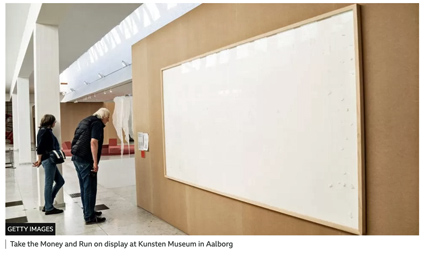Droplifting–adding objects or messages to store shelves to make a political statement–is treated as a minor irritant in the United States. Placing 5 labels protesting Russia’s war against Ukraine on grocery store items has yielded 7 years in a penal colony for artist Aleksandra Skochilenko.
If we take our freedoms for granted, we might lose them.
Russian artist jailed for seven years over Ukraine war price tag protest, by Andrew Roth, The Guardian, November 16, 2023
Aleksandra Skochilenko replaced five supermarket price tags with pieces of paper urging shoppers to stop the war

…“How fragile must the prosecutor’s belief in our state and society be, if he thinks that our statehood and public safety can be brought down by five small pieces of paper?” said Skochilenko, 33, in a final statement in court on Thursday.
“Despite being behind bars, I am freer than you,” she said. “I’m not afraid to be different from others. Perhaps that’s why my state is so afraid of me and others like me and keeps me caged like a dangerous animal.” Read the whole article here.




